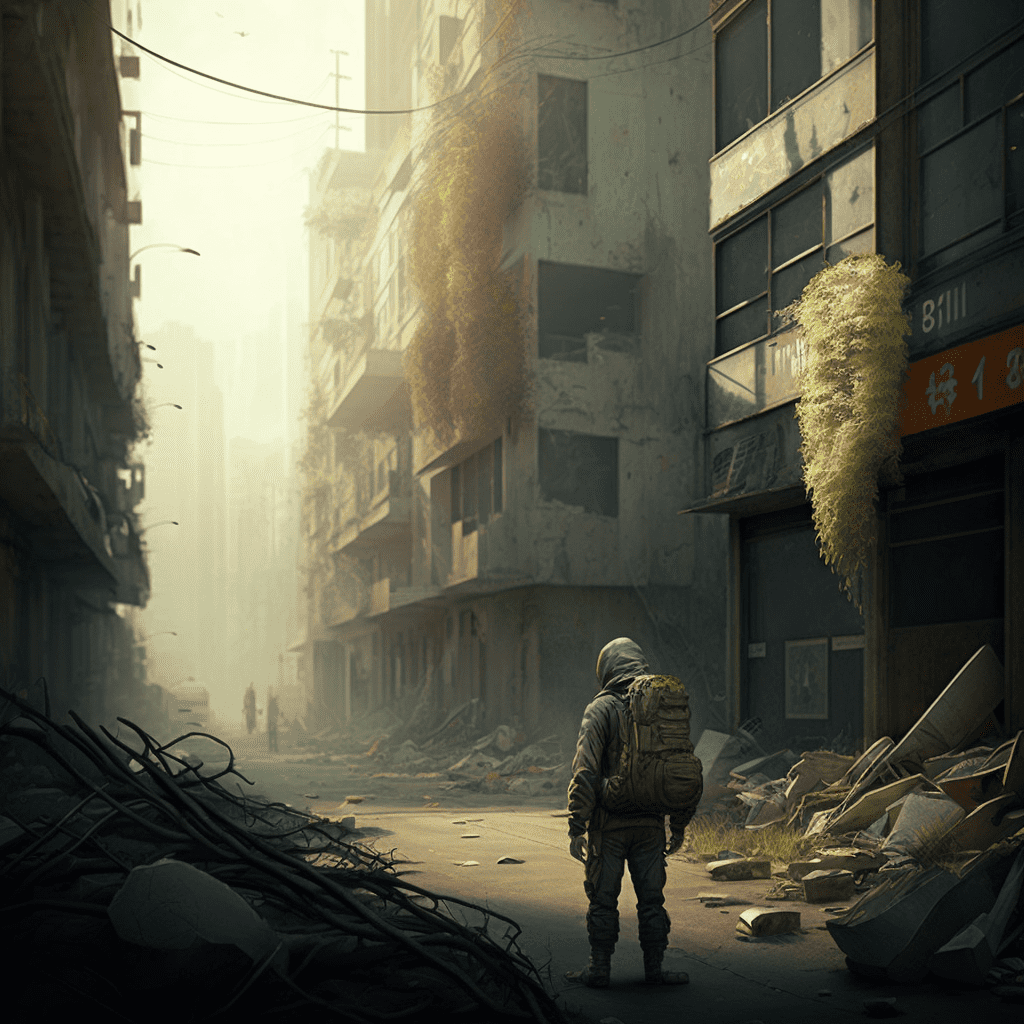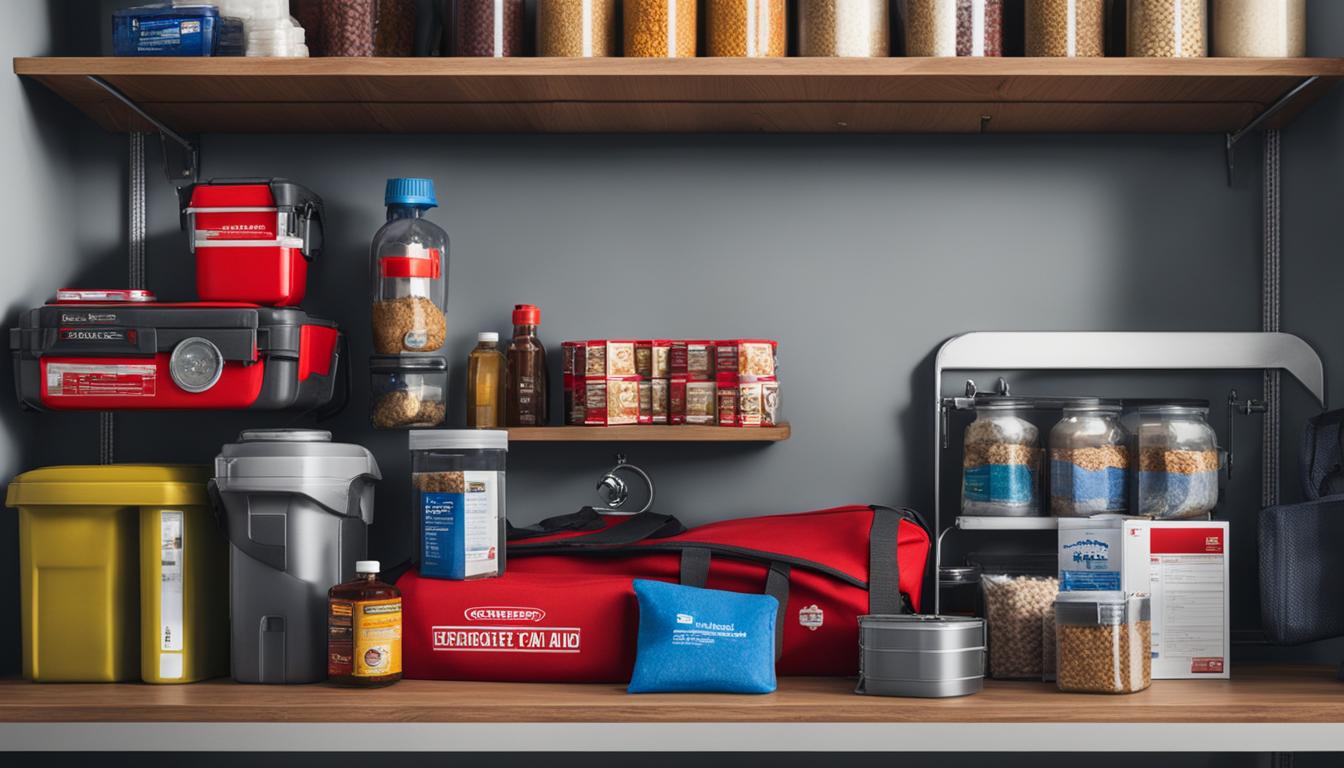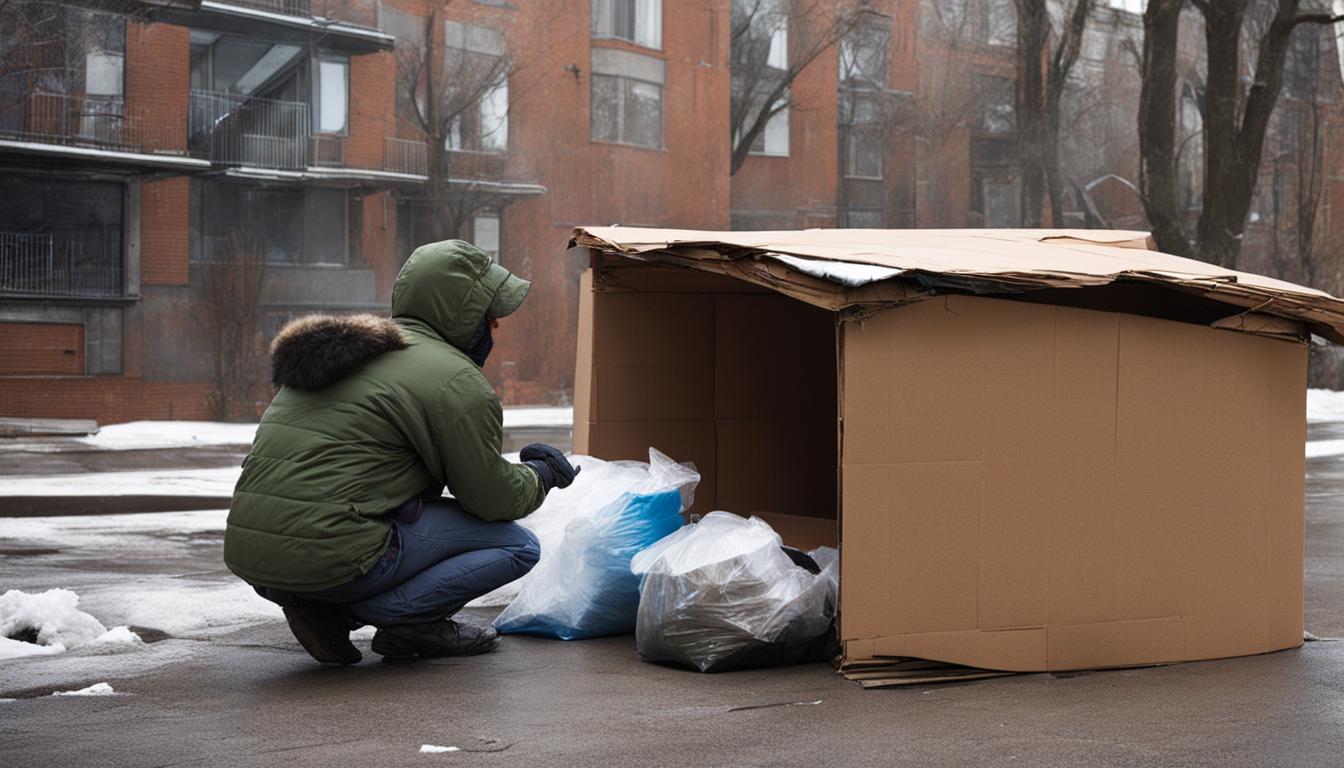In a survival situation, having knowledge could be the key to staying alive. It is essential to be skilled in first aid when trying to navigate through a SHTF (Shit Hits The Fan) scenario while staying healthy. As someone experienced in both shtf survival and first aid, I understand the importance of possessing these skills, which is why I am eager to share the valuable first aid tips I have learned for dealing with emergencies.
In this article, I’ll cover everything from assessing the severity of injuries or illnesses to identifying signs of shock and beyond. With my help, you won’t just survive – you’ll have the confidence to take charge of any medical emergency that arises during times of crisis. You have within yourself all that’s necessary for true liberation; let me show you how to access it!
No matter what kind of chaotic world we’re living in, if you equip yourself with the right tools, there’s no limit to what you can do. Let’s get started on our journey towards self-reliance by taking a closer look at effective methods for dealing with medical emergencies in SHTF scenarios.
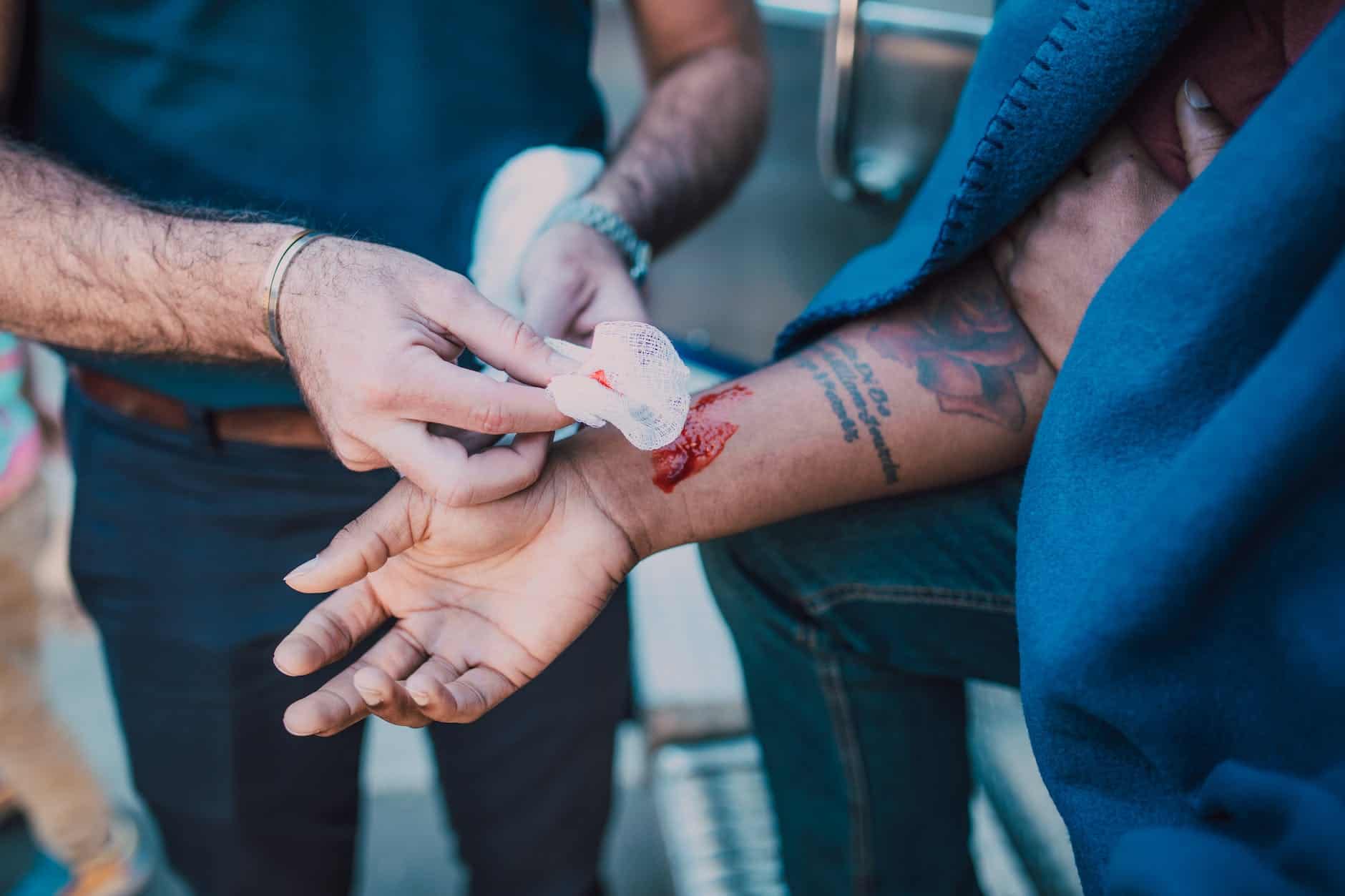
Definition Of SHTF
Have you ever heard the term “SHTF” and wondered what it meant? It stands for “Shit Hits the Fan”, a phrase commonly used to describe an unpredictable and potentially catastrophic event.
In this particular context, SHTF implies an emergency situation in which normal life has been disrupted by some disaster. This could be natural disasters like floods or hurricanes, man-made disasters such as terrorist attacks or pandemics, economic collapse, civil unrest – anything that threatens to disrupt daily life as we know it.
When SHTF, people must rely on their own resources to stay safe. That means having a basic understanding of first aid principles can save lives if medical professionals are unavailable or overwhelmed. In order to do this effectively, however, one needs to understand the basics of first aid and how they apply in different scenarios.
Basic Principles Of First Aid
When it comes to administering first aid in a SHTF situation, there are some basic principles you should keep in mind. Here’s what you need to know:
- Be prepared for any emergency by having the right medical supplies and equipment on hand at all times.
- Stay calm and assess the situation before taking action. Don’t panic!
- Pay close attention to safety protocols when providing treatment to avoid further injury or harm.
- Know how to recognize signs of shock, breathing problems, and other life-threatening conditions so you can respond quickly and appropriately.
- Remember that proper hygiene is important; wear protective gear such as gloves, masks, gowns, etc., if available.
It’s also essential to understand how your body works—the anatomy of different organs and systems—so that you can administer appropriate care based on an individual’s symptoms. Knowing which parts of the body are most vulnerable in a crisis (e.g., head injuries), can help you identify potential risks early on and take steps to limit them where possible. Finally, it’s critical that you stay up-to-date with changes in medical technology, advances in treatments and therapies, as well as current best practices for first aid administration so that you’re equipped with the knowledge necessary for success during a disaster scenario. As we move onto discussing types of wounds and treatment options next, remember these key points about administering first aid during SHTF situations: be prepared with the right supplies; remain calm; pay attention to safety protocols; recognize signs of distress; practice good hygiene; have a basic understanding of human physiology; and stay informed about changes in medicine.
Types Of Wounds And Treatment
Now that we’ve discussed the basic principles of first aid, it’s time to dig into more specific techniques. Treating different types of wounds requires understanding how they differ and what type of treatment will best help them heal. In this section, let’s take a look at the various kinds of wounds and which treatments are most effective for each one.
| Types Of Wounds | Treatment |
|---|---|
| Abrasion | Clean with soap & water, apply antibiotic ointment or cream, cover with bandage, use cold compress if needed |
| Laceration/Cut | Stop any bleeding by applying direct pressure; clean wound with soap & water, close wound using butterfly strips or sutures; use antiseptic solution on skin around wound; cover with sterile dressing and secure in place w/tape or bandage; seek medical care if necessary |
| Puncture Wound | Clean area thoroughly with soap & water, apply antibiotic ointment or cream & cover with sterile gauze pad secured in place w/bandage; seeking professional medical attention is recommended |
When dealing with any kind of open wound – whether it be an abrasion, laceration, or puncture wound – it’s important to remember that proper cleaning and sanitization is essential. This helps prevent infection from developing while also helping speed up the healing process. It’s equally as important to keep the affected area covered until fully healed to avoid further injury and contamination. With these tips in mind, you’ll have all the tools necessary to administer appropriate first aid for common injuries encountered during an SHTF situation. Now let’s explore infection prevention techniques that can be implemented when administering first aid.
Infection Prevention Techniques
In a shtf situation, it is especially important to prevent infection. Infection can set in quickly and cause serious complications if left untreated. To help keep your loved ones safe during an emergency, here are some tips for preventing infection when administering first aid:
First and foremost, be sure to clean the wound with soap and water or an antiseptic solution as soon as possible. Wounds should also be covered with gauze or bandages that have been sterilized before use. This will help protect them from dirt and other organisms that could lead to infection.
Additionally, you should always wear gloves when handling any kind of bodily fluids or open wounds. Gloves provide a barrier between you and potential contaminants, reducing the risk of spreading germs or bacteria. Additionally, they should be disposed of properly after each use to avoid cross-contamination.
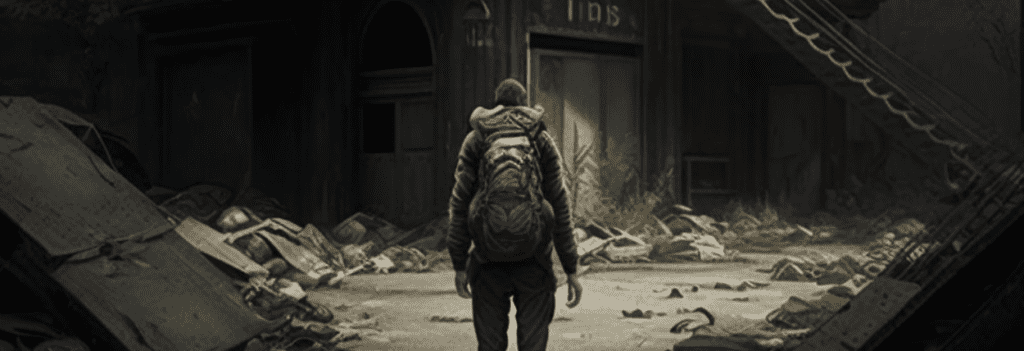
For more severe injuries such as deep cuts or burns, antibiotic ointment may also be applied to reduce the chances of infection taking hold. With these simple steps in mind, you’ll be on your way towards providing effective first aid while keeping yourself and those around you safe from harm. And now let’s move on to discussing bandaging and splinting techniques…
Bandaging And Splinting Techniques
Now that we’ve discussed the practicalities of infection prevention, let’s turn our attention to another key aspect of first aid – bandaging and splinting. This is a vital skill for any prepper or shtf survivor who wishes to be prepared for medical emergencies.
When it comes to dealing with injuries such as broken bones and deep cuts, having the right supplies on hand can make all the difference between life and death. Having an understanding of proper bandage technique is essential if you want to provide effective care in a survival situation. Bandages serve two purposes: they help reduce bleeding by applying direct pressure to wounds, and they protect injured areas from further damage while allowing them to heal. Additionally, when used correctly they can also immobilize fractured limbs, reducing the risk of additional injury or pain.
Splints are an important tool in providing emergency care for fractures and dislocations. They help limit movement until professional medical care can be obtained, thus preventing further injury. The most common types of splints you will encounter in a survival setting are improvised slings made from cloth or rope, wooden sticks tied together with twine, inflatable air casts and commercial rigid splints. Knowing how to construct each type quickly and safely could save someone’s limb in the event of an accident or attack during SHTF conditions! With these techniques at your disposal, you’ll be well-equipped to handle many traumatic incidents should they arise in your day-to-day life after TEOTWAWKI (The End Of The World As We Know It). Now let’s move onto discussing CPR and airway management…
CPR And Airway Management
When it comes to administering first aid, one of the most important skills you can learn is CPR and airway management. Knowing how to perform these two life-saving techniques could mean the difference between life and death in a survival situation.
CPR stands for Cardiopulmonary Resuscitation, and its purpose is to keep oxygenated blood circulating through the body until medical help arrives. To properly administer CPR, you must ensure your patient’s airways are clear and their chest is moving up and down with each compression. You should also be sure to use correct technique while performing compressions: interlock your fingers over the center of the patient’s chest and push hard enough that they move around an inch or so into their ribcage. Remember, you don’t want to apply too much force as this could cause more harm than good!
Airway management involves ensuring there are no obstructions blocking the flow of oxygen from reaching the lungs. You will need to check for foreign objects such as vomit or food particles in order to achieve this. If any obstruction is found, gently remove it using suitable tools such as tweezers or suction devices if available. Additionally, make sure to adjust the head position of your patient by tilting it back slightly; this helps open up their airways so oxygen can reach them easier.
By taking proper precautions when giving CPR and managing an individual’s airway effectively, you can give them a fighting chance at making it out alive in even the direst shtf situations. These vital skills require practice however, so be sure not to wait until disaster strikes before learning them! With diligent preparation now, you’ll be better prepared if ever faced with a real-life emergency scenario later on down the line. Now let’s take a look at shock treatment – another important skill that all survivalists should know…
Shock Treatment
When SHTF, administering first aid to those in shock can be a frightening task. But it doesn’t have to be – with knowledge of the necessary steps and supplies, you’ll be prepared for whatever life throws at you. To illustrate this point, imagine if your best friend was out on a hike and came across someone injured from an accident: Would you know how to help?
Here are 5 key tips for treating shock:
- Establish safety by making sure there is no further danger or risk of harm.
- Monitor breathing rate and pulse, while providing comfort through words and reassurance that help is coming soon.
- Keep affected person warm; use extra clothing or blankets if available.
- Elevate legs above heart level to reduce blood pooling in lower extremities.
- If possible, give small amounts of water or other fluids every 15 minutes until medical attention arrives.
Shock treatment isn’t something we want to think about when all is right in the world – but being prepared can make all the difference during chaotic times. By staying informed and having the right supplies on hand before disaster strikes, you’ll be able to provide swift assistance should anyone need it. Now let’s move onto what necessary supplies are needed to put together your ultimate first aid kit…
Necessary Supplies For First Aid Kit
Having the right supplies on hand is essential for administering first aid in a SHTF situation. It’s important to invest in quality medical products, as well as items that will be useful in an emergency. Here are some of the top must-haves in your survival kit:
- First and foremost, you need basic bandages and wound dressings. This includes gauze pads, adhesive tape, cotton swabs, sterile gloves, and antiseptic wipes or cream. Additionally, it would be best to have antibiotic ointment and hydrogen peroxide to cleanse cuts and scrapes. You may also want to include a suture kit if you can use one safely.
- Next, it’s vital to stock up on medications like aspirin or ibuprofen for pain relief; antihistamines for allergies; antibacterial cream for skin infections; topical ointments for burns and rashes; epinephrine for allergic reactions; eye drops and saline solution for eye injuries; laxatives for constipation relief; oral rehydration salts or sugar water to treat dehydration; cough medicine; cold medicines like decongestants; antacids such as Tums or Maalox tablets.
- Finally, having an eyeglass repair kit can come in handy when someone needs their glasses fixed during an emergency situation.
It’s also wise to keep a few extra items such as tweezers, a thermometer, scissors with rounded tips (to avoid poking people), safety pins, needle-nose pliers (for removing splinters) and other small tools that might come in handy while treating wounds or illnesses. With these supplies ready at all times, you’ll be better prepared when the unexpected happens. As we move forward into discussing improvising with limited resources…
Improvising With Limited Resources
When SHTF, you have to be prepared to make do with whatever resources are available. Even if your first aid kit is limited or non-existent, there are still ways to administer effective medical care. It’s all about using what you have and being resourceful.
First, if supplies are scarce, prioritize using anything that can help stop bleeding quickly and effectively. This could include clothing items such as t-shirts or towels for compressing a wound. If necessary, plastic bags and tape can also be used in order to create an airtight seal around a bandage. For example, if someone has a deep cut that won’t stop bleeding no matter how much pressure is applied to it – try wrapping the wound tightly with a baggie filled with ice cubes secured by duct tape before applying direct pressure to it again in order to slow down blood flow from the wound area.
Lastly, getting creative when improvising with limited resources during SHTF scenarios can save lives! Be sure to stay informed on the different possibilities and always think through the entire process carefully before attempting any kind of medical procedure without proper training or experience. In some cases, even something seemingly simple like creating a makeshift sling out of a shirt may not be enough – so take into account any other possible solutions too! With preparation and practice ahead of time, anyone can become adept at administering basic first aid should they ever find themselves in an emergency situation where every second counts.
Mental Health Considerations
Mental health is an important consideration during a shtf scenario. It’s essential to understand the impact that stress and fear can have on your mental state, so you can be prepared to help yourself and others.
One of the most important things that individuals should do in order to prepare for a shtf event is to take steps to manage their own mental well-being. This includes self-care activities such as getting enough sleep, eating nutritious foods, exercising regularly, and managing stress levels. Additionally, it’s beneficial to practice relaxation techniques like meditation or deep breathing exercises in order to stay calm in difficult situations.
Another key factor when considering mental health during a shtf situation is understanding how best to support those around you who may be struggling with stress or difficult emotions. Providing emotional support by listening actively, offering comfort, and providing reassurance are all ways we can offer assistance without judgement or criticism. Ultimately, looking out for our own wellbeing will allow us to better look out for others too.
In addition to being aware of the psychological effects of survival scenarios on ourselves and others, having knowledge about administering first aid is also vital. Knowing basic emergency medical procedures like CPR could save lives if needed; equipping yourself with this type of information can ensure that you’re ready for whatever comes your way.
Frequently Asked Questions
What Is The Best Way To Store A First Aid Kit?
When a survival situation arises, it is important to be prepared with the right knowledge and resources. Knowing how to store your first aid kit effectively can mean the difference between life and death in an emergency. As a shtf survival and first aid expert, I’d like to share some tips on how best to keep your supplies accessible without sacrificing safety or efficacy.
Having access to quality medical care during an SHTF situation isn’t always guaranteed, so being able to administer first aid correctly is of utmost importance. For this reason, it’s essential that you have all of the materials needed for treating injuries easily at hand when disaster strikes. Here are a few things you should consider when storing your first aid kit:
- Look for waterproof containers – Even if stored indoors, water-resistant cases will help protect against moisture damage and contamination from other substances.
- Make sure items are organized – Very often people don’t think about organizing their supplies until they need them. It pays off immensely if you take time beforehand to group related items together for quick retrieval during emergencies.
- Store only what you need – Don’t clutter up your space by stocking unnecessary items; make sure every item has its purpose and can be used quickly in case of an emergency.
The most important part of keeping a well-stocked first aid kit is having easy access to necessary tools such as bandages, ointments and tweezers while still protecting these delicate instruments from dust and humidity exposure over long periods of time. This way, you’ll feel better knowing that even though there may be chaos outside, inside your home remains a haven where nothing stands in between you and true liberation in times of distress.
How Long Should I Expect A Wound To Take To Heal?
When you’re out in the wilderness, administering first aid is an important skill to have. One of the most common questions I get asked is how long should a wound take to heal? This can vary depending on several factors, and it’s important to know what those factors are so that you can provide your patient with the best care possible.
First, let me say that healing times will depend largely upon where the injury was sustained, its severity and size, and if there were any foreign objects such as splinters or glass embedded into the skin. Additionally, other considerations include:
- The person’s overall health;
- If they’re taking any medications;
- Their age;
- And even their lifestyle habits such as smoking or drinking alcohol regularly.
Then that for smaller cuts and scrapes which don’t involve deep tissue damage – these may only need basic cleaning and bandaging before healing relatively quickly between 5-7 days. However deeper wounds may require stitches and more careful monitoring of your patient due to infection risk being much higher. In this instance, expect a minimum recovery time of 10 days up to 4 weeks depending on the injury’s severity.
Knowing what signs to look out for during a patients recovery period is key too: swelling around the area could indicate infection; redness beyond normal healing process might suggest inflammation; excessive fluid discharge from the wound site should be treated immediately etc., These are just some things to consider when assessing how long it’ll take someone to recover from their injuries while outdoors – knowledge which can prove invaluable in providing effective first aid treatment!
What Is The Best Way To Treat A Major Cut Or Laceration?
When it comes to treating a major cut or laceration, the best thing you can do is to act fast. Minor cuts may require some basic first aid such as cleaning and bandaging, but more serious injuries need immediate attention in order to prevent further complications. Coincidentally, having an understanding of how to treat these kinds of wounds properly could be crucial during a SHTF scenario when medical resources are scarce.
Firstly, the wound should be thoroughly cleaned with clean water and mild soap or cleanser. This will help reduce the risk of infection while also preventing debris from entering the wound. If possible, apply pressure with a sterile gauze pad or cloth to stop any bleeding that may occur. Afterward, using either butterfly strips or surgical tape and gauze pads, bind the edges of the cut together overlying each other until secure enough to have them stay shut without additional support.
Next step would be to use an antibiotic ointment on top of the wound for added protection against bacteria and other contaminants which might cause an infection. The dressing should then be changed every few days depending on how quickly it heals up – this helps ensure that no dirt gets inside the wound and speeds up healing time. Finally, make sure that you check your stitches periodically; if they start coming undone, reapply them as soon as possible so that there’s minimal chance of re-injury or infection. With proper care and regular monitoring, even deeper lacerations can heal relatively quickly under ideal circumstances – although not nearly as fast as minor cuts!
What Is The Best Way To Respond To A Medical Emergency In A Remote Location?
When it comes to responding to medical emergencies in remote locations, the best thing you can do is be prepared. Being properly equipped with the right supplies and knowledge can make all the difference during a crisis. Here are some tips for making sure you’re as ready as possible:
- Have a well-stocked first aid kit on hand at all times, including bandages, gauze pads, antiseptic wipes, pain relievers and any other items necessary for treating wounds or minor illnesses.
- Take time to familiarize yourself with basic first aid principles such as how to perform CPR and proper wound care techniques. It’s also important to have an emergency plan in place so that everyone knows what steps to take if there’s an accident or injury.
- Remember that help may not always be available when you need it most, so recognizing signs of shock or treating severe bleeding is essential. Knowing when it’s appropriate to evacuate someone from the scene and get them immediate medical attention could save their life.
Being prepared for a medical emergency in a remote location means having the right tools and knowledge at your disposal. Access to these resources will give you peace of mind knowing that you can handle whatever situation comes your way without risking anyone else’s safety. From stocking up on survival gear before heading out into unknown terrain to learning about wilderness first aid protocols – taking the initiative now can ensure that you’re ready no matter what happens down the line.
What Is The Most Important Safety Consideration When Administering First Aid?
When it comes to administering first aid, safety should always come first. It’s important for anyone attempting to provide medical assistance in a remote or challenging environment to be aware of their own limitations and the potential risks before taking action. Here are some key considerations when providing emergency care:
- Ensure your surroundings are safe – Before beginning any medical treatment, you must assess if the area is secure from further harm. This includes checking for hazards such as dangerous animals, falling objects or hazardous terrain.
- Assess the patient’s condition – Quickly determine if there is an immediate threat to life and decide how best to respond. If necessary, use basic lifesaving techniques such as CPR and First Aid until more advanced help arrives.
- Use proper technique – Follow all instructions carefully when carrying out any treatments; even small mistakes can lead to worse injury or infection. Make sure that bandages are applied correctly and wound dressings changed regularly with clean materials.
- Minimize stress levels – Stress can worsen injuries, so try to stay calm and reassure the patient by speaking clearly about what you’re doing and why. Taking time for deep breaths throughout will keep you focused and encourage those around you who may have become panicked during the situation.
The success of administering first aid depends heavily on making sound decisions quickly while minimizing risk of harm both to yourself and others involved. While it takes training and experience to handle these situations responsibly, following these guidelines will ensure that everyone stays safe while helping in an emergency scenario.
What Are Some Multi-Purpose Tools That Can Be Used for First Aid in Survival Situations?
Having multi-purpose survival tools in a survival situation is crucial. Some key tools include a Swiss Army knife, which includes a variety of tools like scissors and screwdrivers, and a tactical pen, which can be used for self-defense and breaking glass. A multitool like a Leatherman can also come in handy, with features like pliers, saws, and can openers. These tools are versatile and can be a lifesaver in first aid emergencies.
Conclusion
When dealing with medical emergencies in a survival situation, it is important to be prepared and ready. Having the right first aid supplies on hand can make all the difference in treating injuries quickly and effectively. Storing your kit properly will help ensure that you have access to it when you need it most. Knowing how to treat major cuts or lacerations and what safety considerations are necessary during treatment are essential skills for anyone looking to survive an SHTF scenario.
This basic knowledge can give someone peace of mind while dealing with a medical emergency in a remote location. It also gives them the confidence they need to administer effective first-aid treatments and increase their chances of prosperous recovery times. Responding swiftly and calmly to any medical situation is key if one hopes to stay alive in hostile environments.
In short, having the proper knowledge about SHTF survival lessons and administering first aid is paramount for those who wish to endure extreme situations unscathed. With just a little bit of preparation and practice, such life-saving skills can be developed easily by anyone willing to learn them – keeping us safe from harm no matter what kind of disaster we may face along our journeys!



